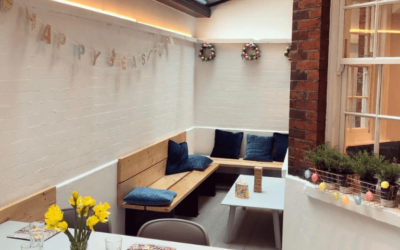Ready to start your journey online? Here’s how to prepare for your first day.
Our approach to recovery involves treating the whole person: who you are – underneath the eating disorder – your goals for recovery and life, and what beliefs you want to hold onto and nurture, and those that you want help letting go of.
Our approach recognises that there’s no one way to have an eating disorder. You don’t have to ‘tick all the boxes’ of a diagnosis, and recovery doesn’t have to be all about the food. At the heart is a genuine care and compassion for our clients and the life they will go on to lead when they leave us.
“It was such a new concept to have therapy remotely but one that I will be forever grateful for.” – Online Client (read on)
Our online day treatment is an innovative approach to recovery. It takes the specialism of our programme and the kindness of our community and transports it into the virtual world, meeting clients where they are in their lives and helping them to break free from their eating disorder.
You might be a student living away from home or have work and family commitments that require a level of flexibility that online treatment provides. It’s a recovery community at the click of a button.

“The support I have received at Orri has been beyond amazing. The therapy is the best I’ve ever experienced, and I have been treated with respect, compassion and kindness throughout.” – Client
Preparing for a day online
Consider your environment
Confidentiality is key for feeling safe and open whilst engaging in therapy. Joining online, it’s important that you’re in a space that feels quiet, private, and comfortable.
We’d encourage you to stay in the same space for the duration of the day and, if possible, in a seated position where your feet can be on the floor so that you can ground yourself.
As clients join with both audio and video, take a moment to consider what others may see in your video. As much as possible, try and avoid any distractions during your sessions – consider the noise level around and in your room, and whether any pets might be roaming.
Some tips:
- If you’re living with other people, inform them that you’ll need privacy between certain times, and perhaps pop a post-it note on the door to remind them
- Make sure your room is as sound-proof as possible. If needed, invest in white noise machine to help to drown out voices
Prep your tech
Before starting the day, ensure your devices are charged fully before the session and that you are connected to fast internet.
As you will be joining with video, consider whether you want to have a self-view (a preview of yourself) or whether you want this turned off. Perhaps you want to use headphones to preserve confidentiality, or some nearby should you need them last minute.
We ask that clients do not bring their mobile phones to therapy groups. Phone calls, texts and alerts can be intrusive and interrupt the flow of the group.
Our tip:
- Turn your phone onto “do not disturb” mode during sessions to ensure you’re not being disturbed with notifications, or place it across the room on silent
Keep yourself safe and grounded
Therapy is an exploration which can delve deep into the stories and experiences that we carry with us.
At times, we might make contact with vulnerabilities that are uncomfortable but very important for our recovery. Take a moment to consider what coping mechanisms you might need to have that will keep you feeling safe and grounded between and during sessions.
Some tips:
- Give yourself time and space to breathe. After a day of therapy, it’s normal to take a few moments before easing yourself back into the home environment. This is a transition that, despite seeming inocuous, is actually a really important one. Be kind and compassionate towards your process
- Create your own self-care toolbox and have it close to you. The toolkit might contain objects that stimulate different senses, for instance essential oils (like lavender), a playlist that keeps you centred, a toy that you can fiddle with, or a puzzle/colouring book you can fully engage with
- Consider how you’ll use the breaks in between sessions. Perhaps you need to take a step outside, or journal for a moment before returning to Zoom. Make sure to inform those around and living with you so they know your boundaries and how you’ll prefer to interact with them
Respecting the community
Therapy groups are designed to be free of judgment and we welcome honest self-expression. There are no ‘right’ or ‘wrong’ answers, we simply encourage you to say what you feel, and not what you think people want to hear.
As you transition back into your home environment, keep in mind that what is said in therapy groups, stays in therapy groups. Our clients do not discuss other clients’ input with friends or relatives, and this guidance means everyone can feel safe in they journey.










